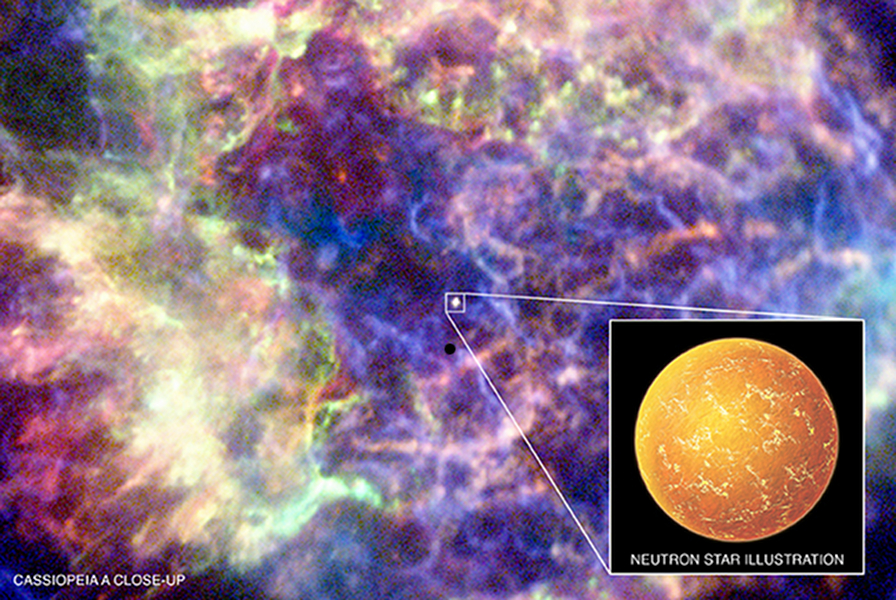
 Credit: X-ray: NASA/CXC/Southampton/W. Ho et al.; Illustration: NASA/CXC/M.Weiss
Credit: X-ray: NASA/CXC/Southampton/W. Ho et al.; Illustration: NASA/CXC/M.Weiss
Silent Superball
Light from a massive star, which blew up about 11,000 years ago, first reached earth about 3 centuries ago. Though the explosion was extremely powerful, and must have been incredibly luminous, the event was not recorded until 1947 when radio emission from the glowing gases ejected in the explosion was first detected. Since then, this remnant has been known as the Cas A supernova remnant, and is an object of intense scrutiny by astronomers. The ejecta produces not only strong radio emission but strong X-ray emission as well. Models of such stellar explosions predict that a strange chunk of matter, a neutron star or black hole, should be left behind in the middle of the remnant. But this object went undetected for about 50 years, until 1999 when the Chandra X-ray Telescope, with its incredible mirrors, was able to pinpoint the X-ray glow from the object cleanly resolved from the complex glowing bright emission around it. The Chandra X-ray image of Cas A is shown above; the strange chunk left behind, a ball which could fit comfortably inside the Washington DC beltway, is marked by a box and shown in the artist conception on the lower right. Thanks to Chandra, astronomers now know that this super-ball is a silent, non-pulsating neutron star, an object with a crust of solid iron, surrounded by an inches-thick carbon atmosphere denser than diamond. But what lies beneath is even more amazing. The rapid cooling of the neutron star as measured by Chandra over the last decade means that the neutron star must have a core of superfluid neutrons, a state of matter never before observed in the Universe.
Published: March 7, 2011
<
HEA Dictionary ● Archive
● Search HEAPOW
● Other Languages
● HEAPOW on Facebook
● Download all Images
● Education ● HEAD
>

Each week the HEASARC
brings you new, exciting and beautiful images from X-ray and Gamma ray
astronomy. Check back each week and be sure to check out the HEAPOW archive!
Page Author: Dr. Michael F. Corcoran
Last modified Monday, 26-Feb-2024 17:20:44 EST


